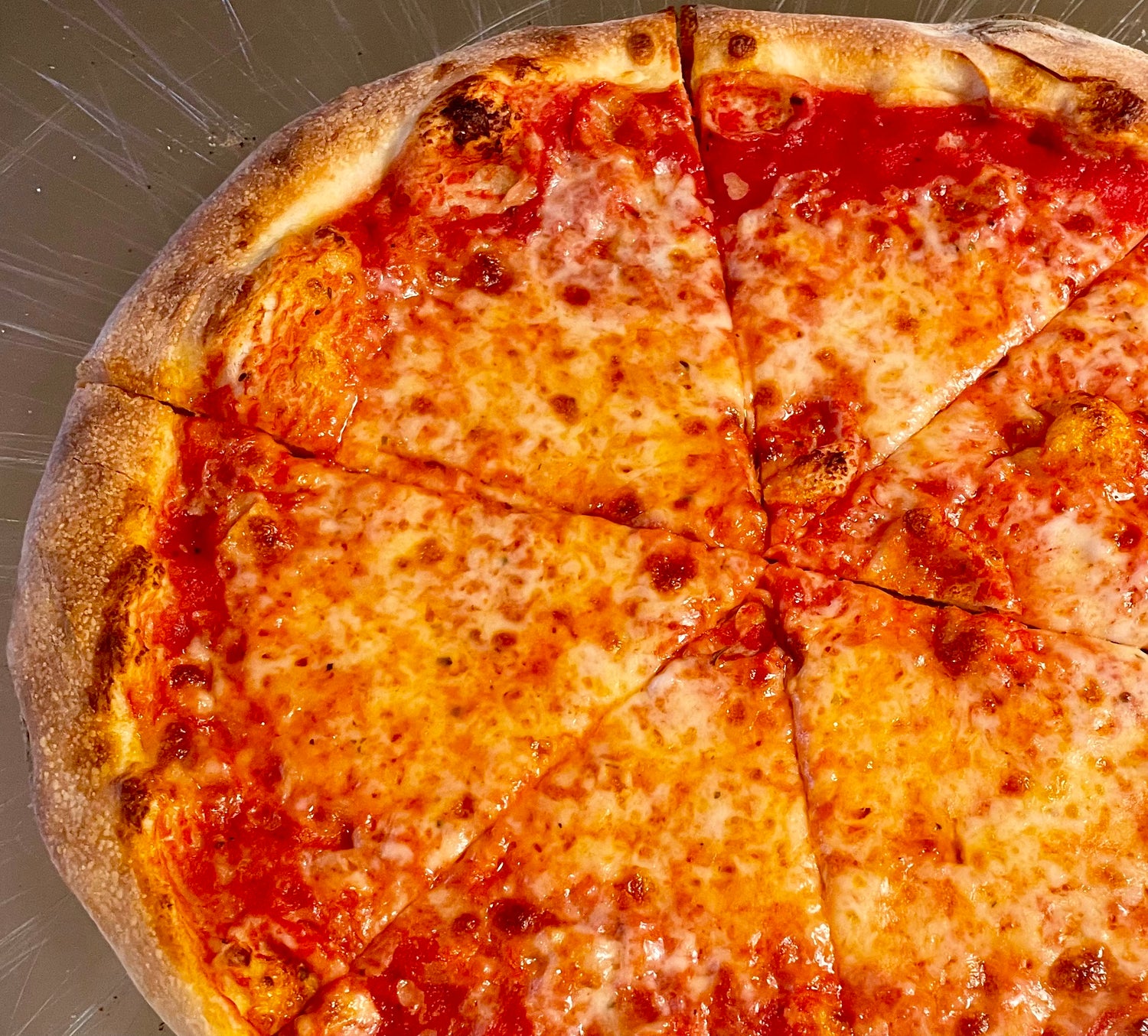Authentic New York Pizza Recipe: Master the Art of NY-Style Pizza at Home
By Robert Brown

Summary
New York pizza is one of the most iconic foods in America. Loved and eaten by millions, it is staggering in its apparent simplicity while taking serious dedication to master.
An institution in and of itself, New York pizza is characterized by its crisp thin crust, slightly chewy rim, seasoned tomato sauce, and beautifully melted mozzarella.
This recipe was developed to create as authentic a New York pizza for your home oven as possible, reheated slices and all!
A trip to your local Restaurant Depot (they provide day passes for non-members) to acquire a 25lb bag of high protein flour (14.2%!), a 105oz. can of Stanislaus tomatoes, and a 6lb. loaf of professional grade whole milk low moisture mozzarella isn’t necessarily required, but for those yearning for a true New York slice, it’s worth the effort.
Otherwise, with an adjustment to your water amount (noted in the recipe below), your grocery store’s flour, canned tomatoes, and whole milk low moisture mozzarella can come together to give you a New York pizza experience that rivals any of your local pizzerias.
Ingredient List
Makes 4 dough balls approximately 355g in weight for 13”-14” diameter pizzas
| Ingredient | How much |
| Water | 507g |
| High Protein Flour** | 873g |
| Instant Dry Yeast | 3g |
| Sugar | 13g |
| Salt | 26g |
| Olive oil | 9g |
*Adjusted +0.75% to account for loss while mixing
**This recipe was developed using All Trumps 14.2% protein flour. If using All Purpose or Bread Flour, increase the water amount to 535 grams and mix in your stand mixer for 3 minutes after adding the salt. The dough will ferment at a slightly quicker rate - adjust proofing time at room temperature according to the activity you observe
Why Grams and not Cups/Spoons?
The weight of one cup of flour can vary up to 20 percent and this variance can completely change the intended final product.
Weighing your ingredients ensures that your dough comes out consistently each and every time and is the first step to making incredible pizza at home.
Recipe Overview
Mixing*:
*At this low of a hydration, hand mixing can be difficult. If you must hand mix, dissolve the yeast into the water, add the flour and sugar, mix until completely combined, mix in the oil, then fully mix in the salt. Cover and rest for 20 minutes, then proceed to steps 5 and 6
Ball:
Preheat Oven:
Edge Shape:
Top
*A tip for knowing how much of an ingredient you are using:
Put the ingredient in its container on your scale and “tare” the scale. Now when you remove an amount of the ingredient, the scale will read “-75g” telling you you’ve removed 75 grams of the ingredient
Bake:
Reheat (optional):
In-Depth Explainers
A note on home ovens:
Home ovens, gas or electric, all behave differently. The best way to learn about your oven is to purchase an infrared thermometer and take the time to measure the temperature of your steel at different times during the preheating process.
Ideally you’d want to launch with a steel temperature of approximately 595F. Always keep an eye on your pizza and rotate if necessary to ensure even browning.

Visit @rubofthekitchen on instagram
Leave a comment
This site is protected by hCaptcha and the hCaptcha Privacy Policy and Terms of Service apply.